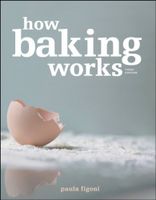Label
All
0
Clear all filters
🔥 Try our grilling cookbooks and save 25% on ckbk membership with code BBQ25 🔥
Questions for Review
Appears in
By Paula Figoni
Published 2003
- Provide examples of tougheners, tenderizers, moisteners, and driers.
- Provide an example of how a different mixing method can affect the outcome of a baked good.
- List and briefly describe seven things that happen as ingredients are mixed into batters or doughs.
- Describe the two main methods used for mixing bread dough.
- What products are commonly mixed using the creaming method?
- Why are unbaked batters and doughs sometimes referred to as foams?
- Why are baked goods sometimes referred to as sponges?
- What five functions does water perform in baking?
- How, and why, can the same pie pastry dough formula result in a tender, mealy crust in one case and a flaky crust in another?
- How do fats contribute to leavening in baked goods?
- Which would be expected to provide more leavening: shortening with a melting point of 130°F (55°C) or margarine with a melting point of 130°F (55°C)? Explain why.
- How do fats and oils tenderize baked goods?
- Which would be expected to provide more leavening: shortening with a melting point of 105°F (40°C) or shortening with a melting point of 130°F (55°C)? Explain why.
- Which would be expected to give more tenderness: shortening with a melting point of 105°F (40°C) or shortening with a melting point of 130°F (55°C)? Explain why.
- How do solid fats increase spread in cookies?
- How do sugar crystals affect the thickness of batters and doughs? How does dissolved sugar affect thickness?
- What is oven spring, and what causes it?
- What are the three main leavening gases in baked goods?
- How do leavening agents contribute to the tenderness of baked goods?
- Provide examples of microorganisms. What happens to them during the baking process? Why is this important? Provide two reasons.
- Describe the process of egg coagulation.
- Describe the process of starch gelatinization.
- What causes a dry crust to form on baked goods?
- What three things result from gases evaporating?
- Provide an example of an enzyme. What happens to it—and other enzymes—during the baking process?
- Provide examples of nutrients. For one of the nutrients, briefly explain what happens to it during baking.
- What happens during baking that would cause apples in an apple pie to soften and lose shape?
- List and briefly describe eight things that occur as products cool.
- What is the main cause for the staling of baked goods? What other factors contribute to staling?
Advertisement
Advertisement
The licensor does not allow printing of this title


